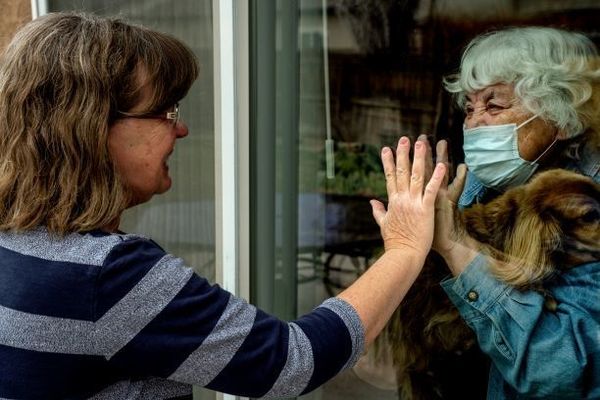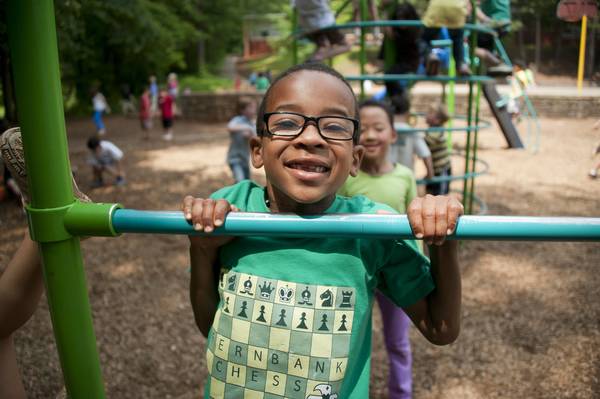Phone calls. Glimpses of loved ones through windows locked tight. Bags of groceries left on the front porch. For the past year, this is how those most vulnerable to Covid-19 interacted with the outside world. In the U.S. today, 1.5 million senior citizens are homebound, and another 1.5 million leave their houses only with assistance. When Covid-19 put a stop to community events, volunteer activity, and other social opportunities, it left the senior population—already living in an isolated world—even more cut off from daily human interaction.
A close second to concerns of Covid-19’s ravages to physical health are concerns about how it’s impacted people’s mental well-being. No one thinks about this more than LEO co-founder Bill Evans. Six months into America’s coronavirus pandemic, he had data linking nursing home quality with mortality rates for residents. What he found was that Covid-19 was not the only threat.

His research showed that nursing homes categorized as “high quality”—which imposed the strictest measures, such as disallowing all visitors, to stop Covid-19’s spread—saw significantly more non-Covid deaths than low-quality nursing homes with more relaxed measures. These results were even more pronounced in geographic areas considered low-risk for the spread of Covid-19. In fact, counties that had zero Covid-19 deaths saw non-Covid deaths among nursing home residents increase proportionate with the quality of the home. Nursing homes ranked as the highest quality saw 35% more non-Covid deaths than the lowest. Which begs the question: why?
Bill’s theory is tragically sad but makes sense. He thinks that the negative effects of the social isolation residents experienced at the strictest homes played a significant role in their mortality. In other words, they were safe from the coronavirus, but dying of loneliness.
Social connections are well understood as offering protective health benefits to everyone, and senior citizens in particular. But declining physical health and the deaths of family members and lifelong friends can make it hard for seniors to maintain vibrant social lives. Senior Companion Programs—or SCPs—may be a solution. SCPs partner volunteers—many of them older adults themselves—with elderly and homebound community members. The hope is that both parties benefit from the budding friendship and that measures of health and self-sufficiency get a boost as a result.
These programs sound like a great idea, but they have never been rigorously put to the test. Existing evaluations are largely descriptive and based on either anecdotal case studies or very small sample sizes. LEO’s setting out to discover the precise impact SCPs have on seniors’ health and independent living. If these programs are proven effective, they could make a big difference in the quality of life for senior citizens across the country.
LEO is collaborating with five social service agencies across the United States that run large and active SCPs specifically geared towards low-income seniors: Catholic Charities of Southeast Michigan, Georgia Southern University, Positive Maturity, the Health Association of Niagara County, NY (HANCI), and Good Samaritan. We will work with these partner organizations throughout the fall to design a randomized controlled trial experiment of their SCP programs, with plans to launch the study in early 2022. Together, we will learn the impact that SCPs can have on quality-of-life measures, assisted living status, and health outcomes like hospitalizations and ER visits.
The Covid-19 pandemic has focused a sharp light on the negative impact that isolation can have on senior citizens and other vulnerable people, making LEO’s Senior Companion Program evaluation necessary now more than ever. At least 3 million senior citizens across the country stand to benefit from companion services backed by evidence of their effectiveness. We owe it to those most in need to provide rigorous research on the effects these kinds of programs may have.
Meet more new LEO partners
Poverty is complex, multi-faceted, and won’t be solved by a one-size-fits-all solution. This is why we’ve convened a new cohort of innovative service providers—some of poverty’s fiercest adversaries striving to make a lasting impact in their communities. These organizations are partnering with our researchers to design, implement, and evaluate interventions to identify solutions that will help people get out of poverty, for good.
For some, getting out of poverty for good means staying out of jail for good. The Goodwill Excel Center in Indianapolis, IN has created new programming specifically to serve adult learners who have been involved with the criminal justice system. The Excel Center believes that these supportive services will have a positive impact on high school graduation rates, recidivism, and housing stability for these students.
Heartland Human Care Services in Chicago takes a similar holistic approach in its rapid rehousing program for people experiencing homelessness. By combining case management, employment services, and asset-building support, Heartland aims to set its clients on a stable, long-term housing path after they exit the program.

Porter-Leath in Memphis, TN works to illuminate this stable path where it starts—in childhood. By providing professional development training to pre-K teachers and helping parents understand how to engage with their children’s learning, Porter-Leath works to increase kindergarten readiness and 3rd-grade reading levels for students, giving them a solid educational foundation upon which to build a future career.
This commitment to early interventions is a hallmark of the 1P Foundation’s model as well. 1P helps those on the brink of homelessness in LA remain in their homes by offering a no-interest loan program, with the goal of helping families avoid homelessness altogether.
Getting out of poverty requires more than just overcoming a single crisis. It’s a long-term journey to self-sufficiency. Dfree offers programs to address asset poverty among Black Americans. They use a curriculum steeped in the historical, psychological, and spiritual context of Black poverty with the goal to increase financial resiliency for Black families across the country.
Over the coming months, we look forward to pursuing long-term impact by launching rigorous, thoughtful evaluations with these incredible partners. By enabling them to better execute their courageous missions, we will be one step closer to learning what works to reduce poverty. We can’t wait to share what we learn.